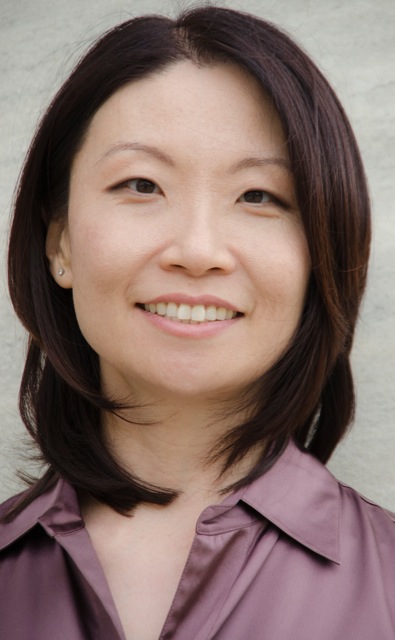Learning to cope with your condition/vascular anomaly
‘Body Art’

Dr. Margaret Lee is a pediatric dermatologist in Boston, USA. As a child she was diagnosed with CMTC with a modified port-wine stain. She later adjusted it to DCMO after research by herself. As a doctor she now treats children who have the same kind of condition as herself. She knows what they are going through and wants to teach children and their parents how to deal with their condition.
Diffused capillary malformation with overgrowth (DCMO)
“My birthmark was big, but I didn’t think it was a big deal,” says Lee about her DCMO anomaly. “You couldn’t see it when I was wearing long pants. I was bullied for my ethnicity even more than for my blotchy skin.” After graduation from college she was invited to be a volunteer for the New England Dermatological Society in their clinical studies. “I was special because my birthmark was large and very pale and blotchy unlike most others.”
She became very interested in these kind of things and she went to medical school. When she did a combined fellowship in pediatric dermatology and vascular anomalies at Boston Children’s Hospital, she conducted research on a group of children who didn’t fit into the existing categories of vascular anomalies. “Looking at this group of children, I suddenly realized: what they have is what I have! However, the condition had not yet been described”. She called the condition ‘diffused capillary malformation with overgrowth’ (DCMO) and published a scientific article about it with her colleagues in 2013 (click here for the article). The discovery added a new type of vascular disease to the many different already existing vascular anomalies.
Comfortable in our skin
Lee is fortunate to be able to understand vascular anomalies from both a medical and personal perspective. She is also very concerned with the psychosocial health of her patients but actually with anyone who has something special or different. She therefore founded the non-profit organization ‘Comfortable In Our Skin’, which focuses on young people to promote self-acceptance of their diversity or being different.
“If you are born with a birthmark, a vascular anomaly or something else that stands out in the average society, you have to learn to deal with it. That is my most important message that I am trying to promote. Learning to deal with it as a patient or as a parent of a patient.”
‘Name it, own it and go with it’
Mindfulness could help in some cases. Especially for those who feel very anxious and maybe overthink. You can learn to accept or embrace the situation you find yourself in, which may not be so easy in the beginning.
Lee has come up with an important theme for this: ‘name it, own it and then go with it’.
What she means by it is the following. Name it, means: name the disease, or get a diagnosis from the doctor. But then: how do you own it? How do you come to be comfortable with it? You can. You can actually learn to think that something that you thought always was a very bad thing actually can be a good thing. Lee: “I try to teach this to my patients. You can derive something positive from something you initially found uncomfortable.
Also, you shouldn’t worry too much about someone judging you negatively. Anybody worthy of your love or friendship won’t judge you, hate you, or be mean to you based on your appearance or whatever you’re going through. Someone with a more extrovert, friendly and social personality and who accepts his/her condition will have an easier life. People will respond positively to that.
Body Art
When is a good time or age to talk to your child about the condition? Lee: “There is no general answer to that. I think that you have to feel for yourself when that moment has arrived. When does it feel right or when is your child increasingly asking more questions? It is important to be as neutral and positive as possible about the spots on the skin/vascular disorder.
What name do you give the spots? Beauty mark? Birthmark? Magic birthmark? Magic beauty spot? That depends entirely on your own style. What suits you? I like to call it ‘body art’. Many people in children’s dermatology also call it body art”.
Written by Dr. Lilian Vermeer





